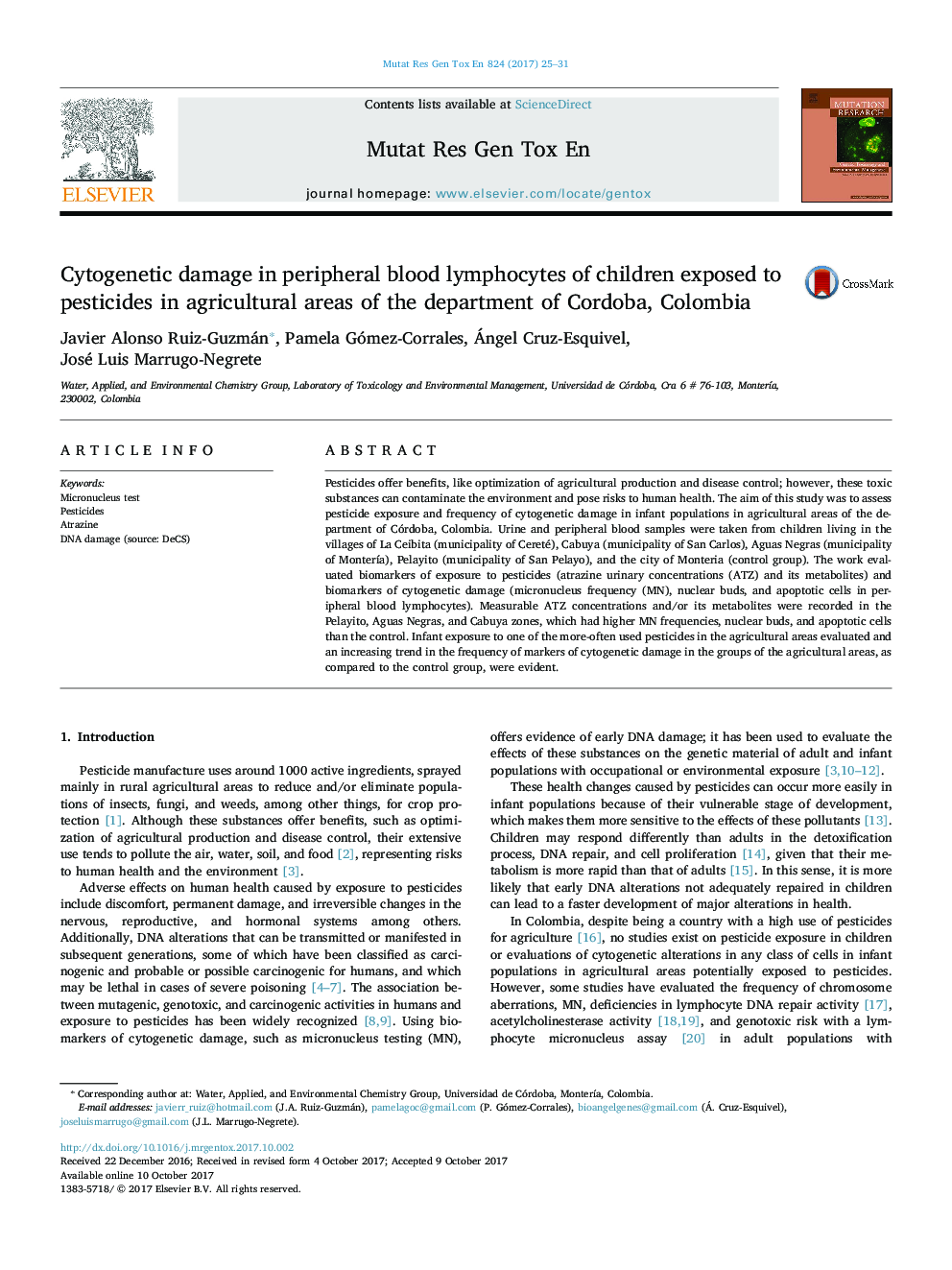| Article ID | Journal | Published Year | Pages | File Type |
|---|---|---|---|---|
| 8456247 | Mutation Research/Genetic Toxicology and Environmental Mutagenesis | 2017 | 7 Pages |
Abstract
Pesticides offer benefits, like optimization of agricultural production and disease control; however, these toxic substances can contaminate the environment and pose risks to human health. The aim of this study was to assess pesticide exposure and frequency of cytogenetic damage in infant populations in agricultural areas of the department of Córdoba, Colombia. Urine and peripheral blood samples were taken from children living in the villages of La Ceibita (municipality of Cereté), Cabuya (municipality of San Carlos), Aguas Negras (municipality of MonterÃa), Pelayito (municipality of San Pelayo), and the city of Monteria (control group). The work evaluated biomarkers of exposure to pesticides (atrazine urinary concentrations (ATZ) and its metabolites) and biomarkers of cytogenetic damage (micronucleus frequency (MN), nuclear buds, and apoptotic cells in peripheral blood lymphocytes). Measurable ATZ concentrations and/or its metabolites were recorded in the Pelayito, Aguas Negras, and Cabuya zones, which had higher MN frequencies, nuclear buds, and apoptotic cells than the control. Infant exposure to one of the more-often used pesticides in the agricultural areas evaluated and an increasing trend in the frequency of markers of cytogenetic damage in the groups of the agricultural areas, as compared to the control group, were evident.
Keywords
Related Topics
Life Sciences
Biochemistry, Genetics and Molecular Biology
Cancer Research
Authors
Javier Alonso Ruiz-Guzmán, Pamela Gómez-Corrales, Ángel Cruz-Esquivel, José Luis Marrugo-Negrete,
